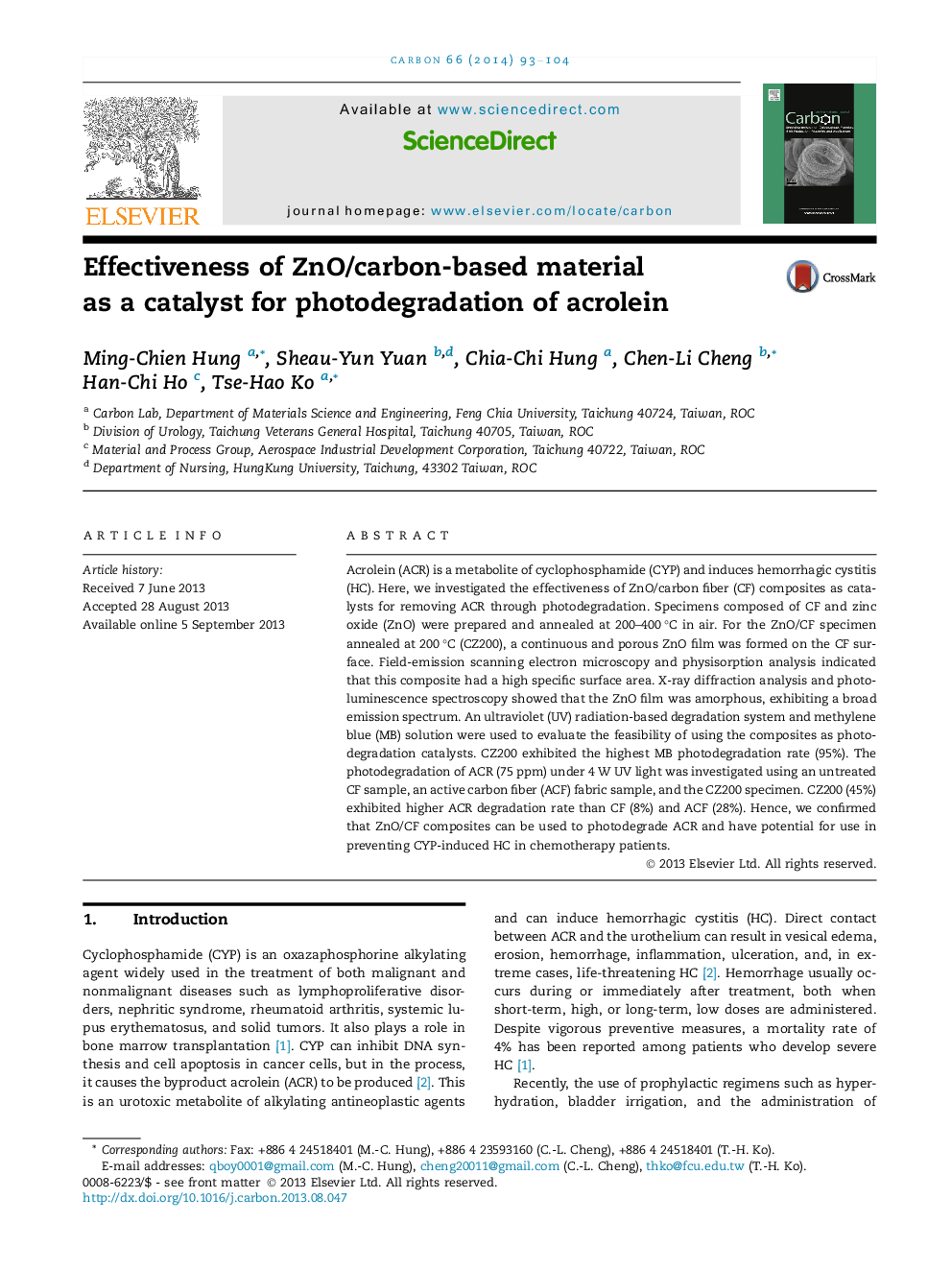| Article ID | Journal | Published Year | Pages | File Type |
|---|---|---|---|---|
| 7855180 | Carbon | 2014 | 12 Pages |
Abstract
Acrolein (ACR) is a metabolite of cyclophosphamide (CYP) and induces hemorrhagic cystitis (HC). Here, we investigated the effectiveness of ZnO/carbon fiber (CF) composites as catalysts for removing ACR through photodegradation. Specimens composed of CF and zinc oxide (ZnO) were prepared and annealed at 200-400 °C in air. For the ZnO/CF specimen annealed at 200 °C (CZ200), a continuous and porous ZnO film was formed on the CF surface. Field-emission scanning electron microscopy and physisorption analysis indicated that this composite had a high specific surface area. X-ray diffraction analysis and photoluminescence spectroscopy showed that the ZnO film was amorphous, exhibiting a broad emission spectrum. An ultraviolet (UV) radiation-based degradation system and methylene blue (MB) solution were used to evaluate the feasibility of using the composites as photodegradation catalysts. CZ200 exhibited the highest MB photodegradation rate (95%). The photodegradation of ACR (75 ppm) under 4 W UV light was investigated using an untreated CF sample, an active carbon fiber (ACF) fabric sample, and the CZ200 specimen. CZ200 (45%) exhibited higher ACR degradation rate than CF (8%) and ACF (28%). Hence, we confirmed that ZnO/CF composites can be used to photodegrade ACR and have potential for use in preventing CYP-induced HC in chemotherapy patients.
Related Topics
Physical Sciences and Engineering
Energy
Energy (General)
Authors
Ming-Chien Hung, Sheau-Yun Yuan, Chia-Chi Hung, Chen-Li Cheng, Han-Chi Ho, Tse-Hao Ko,
